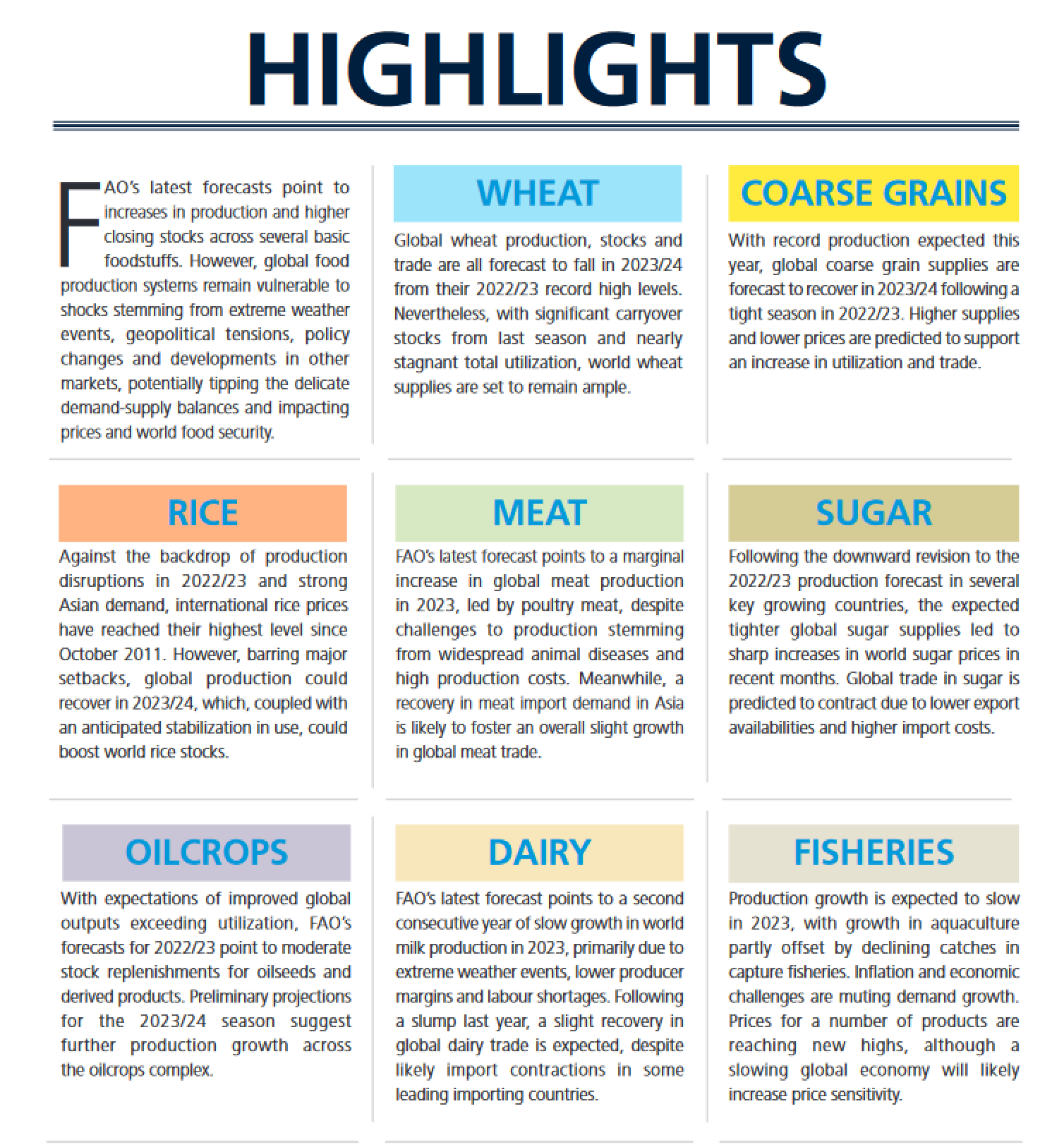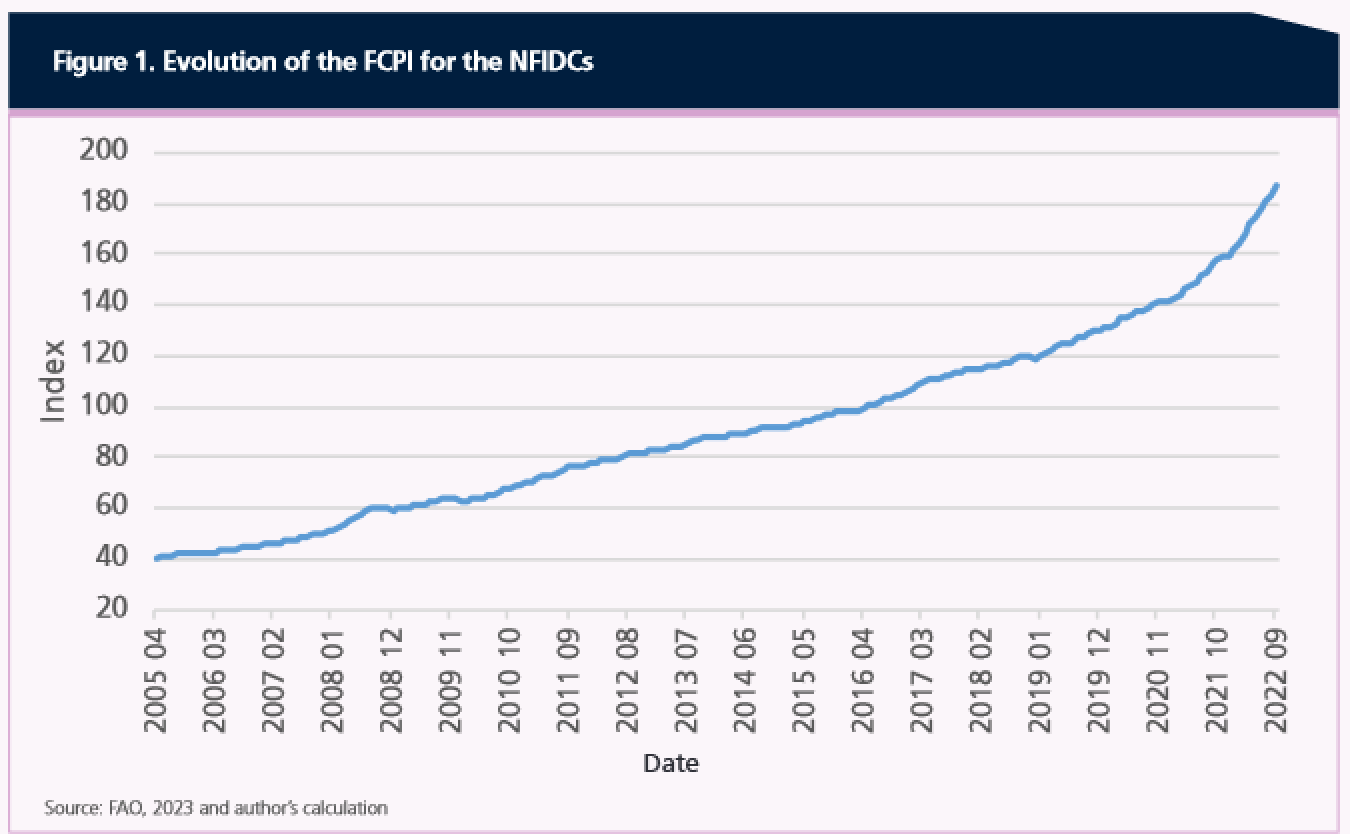FAO’s latest forecasts point to increases in production and higher stocks across several basic foodstuffs. However, global food production systems remain vulnerable to shocks, stemming from weather conditions, geopolitical tensions and policies, potentially tipping the delicate demand-supply balances, with implications for global food security.
Issued twice a year, the June issue of the Food Outlook offers market summaries of FAO’s reviews of market supply and demand trends for the world’s major foodstuffs, namely cereals, oilcrops, sugar, meat, dairy and fish. It also looks at trends in food import bills, Ocean freight rates, international food prices and futures markets.

Special Feature: Food inflation in net food importing countries (NFIDVCs)
The analysis described in this note gives rise to several observations. First, the real appreciation of the United States dollar meant that the increase in international cereal prices was generally much higher when prices were expressed in local currency terms. For the group of NFIDCs, the analysis showed that, over the period from June 2020 to May 2022, world wheat prices in real local currency terms rose, on average, by as much as 6 percentage points more than the increase in world wheat prices expressed in United States dollars.
Second, the sustained fall in world cereal prices, after reaching a peak in mid-2022, was not fully transmitted to NFIDCs in real domestic prices. Changes in real exchange rates are only one component of food import costs, which also include elements such as transportation, insurance, financing and other retailing fees. Increases in these costs constitute a burden, particularly on the poorest and most vulnerable people, with serious implications for their food security. Further analysis is warranted to assess the extent to which these elements have contributed to recent domestic food inflation.
Third, while food inflation in the NFIDCs rose in mid-2020 for several successive months, data up to September 2022 seems to indicate that the pace of inflation has abated since reaching a peak in April 2022. Yet there are heightened risks linked with this somewhat encouraging prospect.
Defeating inflation requires coordinated actions at national and international levels. Central banks need to maintain tight monetary policies until core inflation is clearly on a downward trajectory. Likewise, authorities should prioritize fiscal consolidation, with well-targeted measures to support the poor, vulnerable and food-insecure segments of the population. A tight fiscal stance keeps debt service costs within acceptable limits, which ensures financial stability, resilience to future shocks and, in the case of NFIDCs, the capacity to finance food import bills.
In addition to monetary and fiscal measures, governments should work towards introducing effective supply-side actions that can ease headline inflation and, in particular, food inflation. For example, incentives can be introduced to accelerate the adoption of farm productivity-enhancing innovations and technologies, and improve access to markets, credit and extension services. Digitalization, science, investments in climate change and renewable energy can also help win the battle against inflation. Finally, empowering women and youth and promoting their participation in agrifood systems will go a long way towards sustaining productivity growth and easing inflationary pressure.

| Year of publication | |
| Geographic coverage | Global |
| Originally published | 19 Jun 2023 |
| Related organisation(s) | FAO - Food and Agriculture Organization of the United Nations |
| Knowledge service | Metadata | Global Food and Nutrition Security | Lower middle income countryFood price crisis |
| Digital Europa Thesaurus (DET) | policymakingprice of agricultural producefisheries policymeatcerealsdairy productionagricultural marketinflationagricultural productionsugaroilseeds |
